In-Process Measurement of Three-Dimensional Deformations Based on Speckle Photography
Abstract
:1. Introduction
2. Materials and Methods
2.1. In-Plane Speckle Photography
2.2. Three-Dimensional Speckle Photography in Out-of-Plane Direction
2.3. Relationship between the Width of the Correlation Function and the Out-of-Plane Shift
3. Results of In-Process Measurements in a Deep Rolling Process
3.1. Measurement Setup and Experimental Realization
3.2. Results of 3D-Deformation Measurements
4. Discussion
5. Conclusions and Outlook
Author Contributions
Funding
Institutional Review Board Statement
Informed Consent Statement
Data Availability Statement
Acknowledgments
Conflicts of Interest
References
- Field, M.; Kahles, J.F. Review of Surface Integrity of Machined Components. CIRP Ann. Manuf. Technol. 1971, 20, 153–163. [Google Scholar]
- Jawahir, I.S.; Brinksmeier, E.; M’Saoubi, R.; Aspinwall, D.K.; Outeiro, J.C.; Meyer, D.; Umbrello, D.; Jayal, A.D. Surface integrity in material removal processes: Recent advances. CIRP Ann. 2011, 60, 603–626. [Google Scholar] [CrossRef]
- Habschied, M.; de Graaff, B.; Klumpp, A.; Schulze, V. Fertigung und Eigenspannungen. HTM J. Heat Treat. Mater. 2015, 70, 111–121. [Google Scholar] [CrossRef]
- Liang, S.Y.; Su, J.-C. Residual Stress Modeling in Orthogonal Machining. CIRP Ann. 2007, 56, 65–68. [Google Scholar] [CrossRef]
- Lazoglu, I.; Ulutan, D.; Alaca, B.E. An enhanced analytical model for residual stress prediction in machining. CIRP Ann. 2008, 57, 81–84. [Google Scholar] [CrossRef]
- Brinksmeier, E.; Heinzel, C.; Garbrecht, M.; Sölter, J.; Reucher, G. Residual Stresses in High Speed Turning of Thin-Walled Cylindrical Workpieces. Int. J. Autom. Technol. 2011, 5, 313–319. [Google Scholar] [CrossRef]
- Brinksmeier, E.; Klocke, F.; Lucca, D.A.; Sölter, J.; Meyer, D. Process Signatures—A New Approach to Solve the Inverse Surface Integrity Problem in Machining Processes. Procedia CIRP 2014, 13, 429–434. [Google Scholar] [CrossRef] [Green Version]
- Greenwood, G.W.; Johnson, R.H. The deformation of metals under small stresses during phase transformations. Proc. R. Soc. London. Ser. A Math. Phys. Sci. 1965, 283, 403–422. [Google Scholar]
- Parks, V.J. The range of speckle metrology. Exp. Mech. 1980, 20, 181–191. [Google Scholar] [CrossRef]
- Fischer, A. Fundamental uncertainty limit of optical flow velocimetry according to Heisenberg’s uncertainty principle. Appl. Opt. 2016, 55, 8787–8795. [Google Scholar] [CrossRef] [PubMed]
- Tausendfreund, A.; Stöbener, D.; Ströbel, G. In-process measurements of strain fields during grinding. In Proceedings of the 16th International Conference of the European Society for Precision Engineering and Nanotechnology (Euspen), Nottingham, UK, 30 May–3 June 2016; pp. 85–86. [Google Scholar]
- Tausendfreund, A.; Borchers, F.; Kohls, E.; Kuschel, S.; Stöbener, D.; Heinzel, C.; Fischer, A. Investigations on Material Loads during Grinding by Speckle Photography. J. Manuf. Mater. Process. 2018, 2, 71. [Google Scholar] [CrossRef] [Green Version]
- Tausendfreund, A.; Stöbener, D.; Fischer, A. Precise In-Process Strain Measurements for the Investigation of Surface Modification Mechanisms. J. Manuf. Mater. Process. 2018, 2, 9. [Google Scholar] [CrossRef] [Green Version]
- Tausendfreund, A.; Stöbener, D.; Fischer, A. Induction of Highly Dynamic Shock Waves in Machining Processes with Multiple Loads and Short Tool Impacts. Appl. Sci. 2019, 9, 2293. [Google Scholar] [CrossRef] [Green Version]
- Tausendfreund, A.; Stöbener, D.; Fischer, A. In-process workpiece deformation measurements under the rough environments of manufacturing technology. Procedia CIRP 2020, 87, 409–414. [Google Scholar] [CrossRef]
- Khodadad, D.; Singh, A.K.; Pedrini, G.; Sjödahl, M. Full-field 3D deformation measurement: Comparison between speckle phase and displacement evaluation. Appl. Opt. 2016, 55, 7735–7743. [Google Scholar] [CrossRef] [PubMed]
- Fricke-Begemann, T. Optical Measurement of Deformation Fields and Surface Processes with Digital Speckle Correlation. Ph.D. Thesis, University of Oldenburg, Oldenburg, Germany, 2002. [Google Scholar]
- Nobach, H.; Honkanen, M. Two-dimensional Gaussian regression for sub-pixel displacement estimation in particle image velocimetry or particle position estimation in particle tracking velocimetry. Exp. Fluids 2005, 38, 511–515. [Google Scholar] [CrossRef]
- Meyer, H.; Epp, J. In Situ X-ray Diffraction Analysis of Stresses during Deep Rolling of Steel. Quantum Beam Sci. 2018, 2, 11. [Google Scholar] [CrossRef] [Green Version]
- Tausendfreund, A.; Stöbener, D.; Fischer, A. Messung thermomechanischer Beanspruchungen in laufenden Schleifprozessen. tm-Tech. Mess. 2020, 87, 201–209. [Google Scholar] [CrossRef]

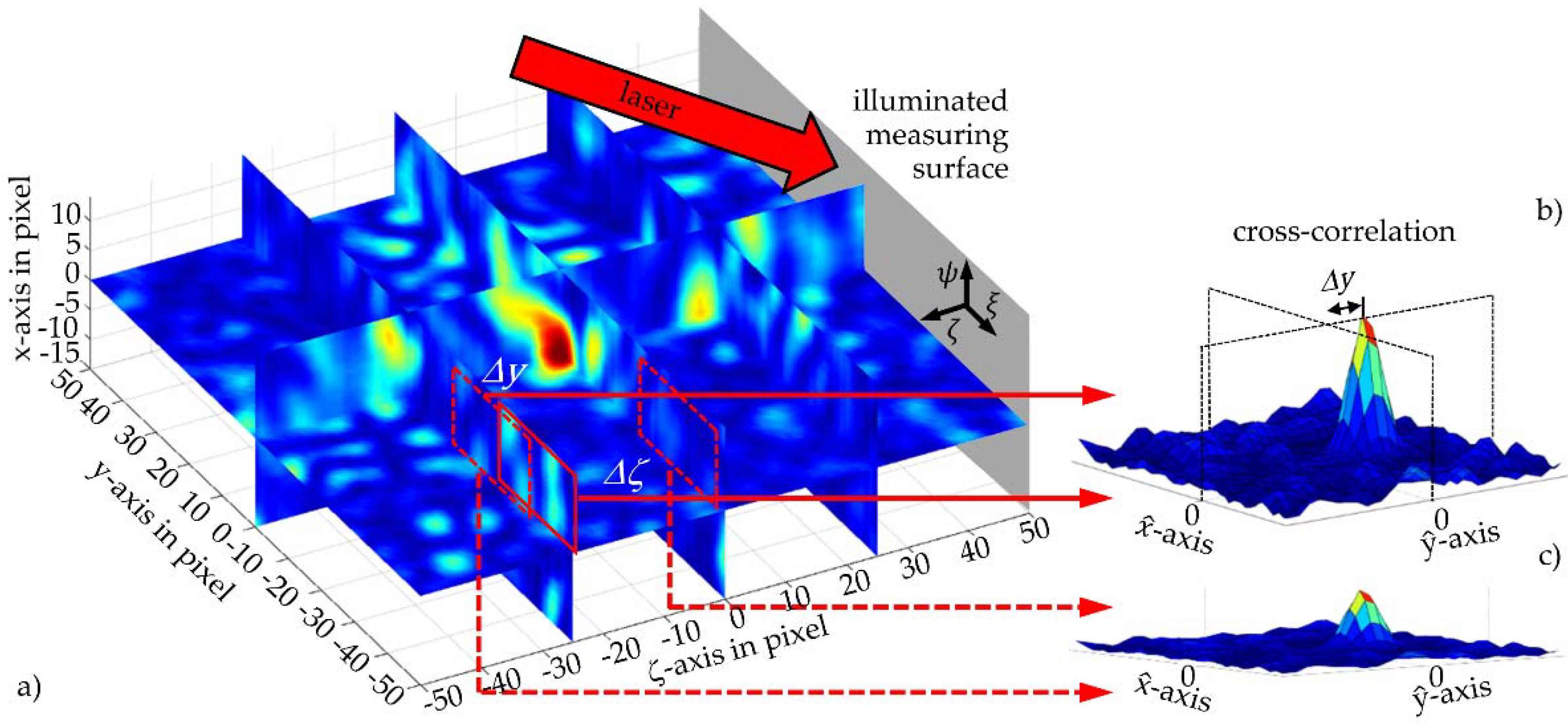
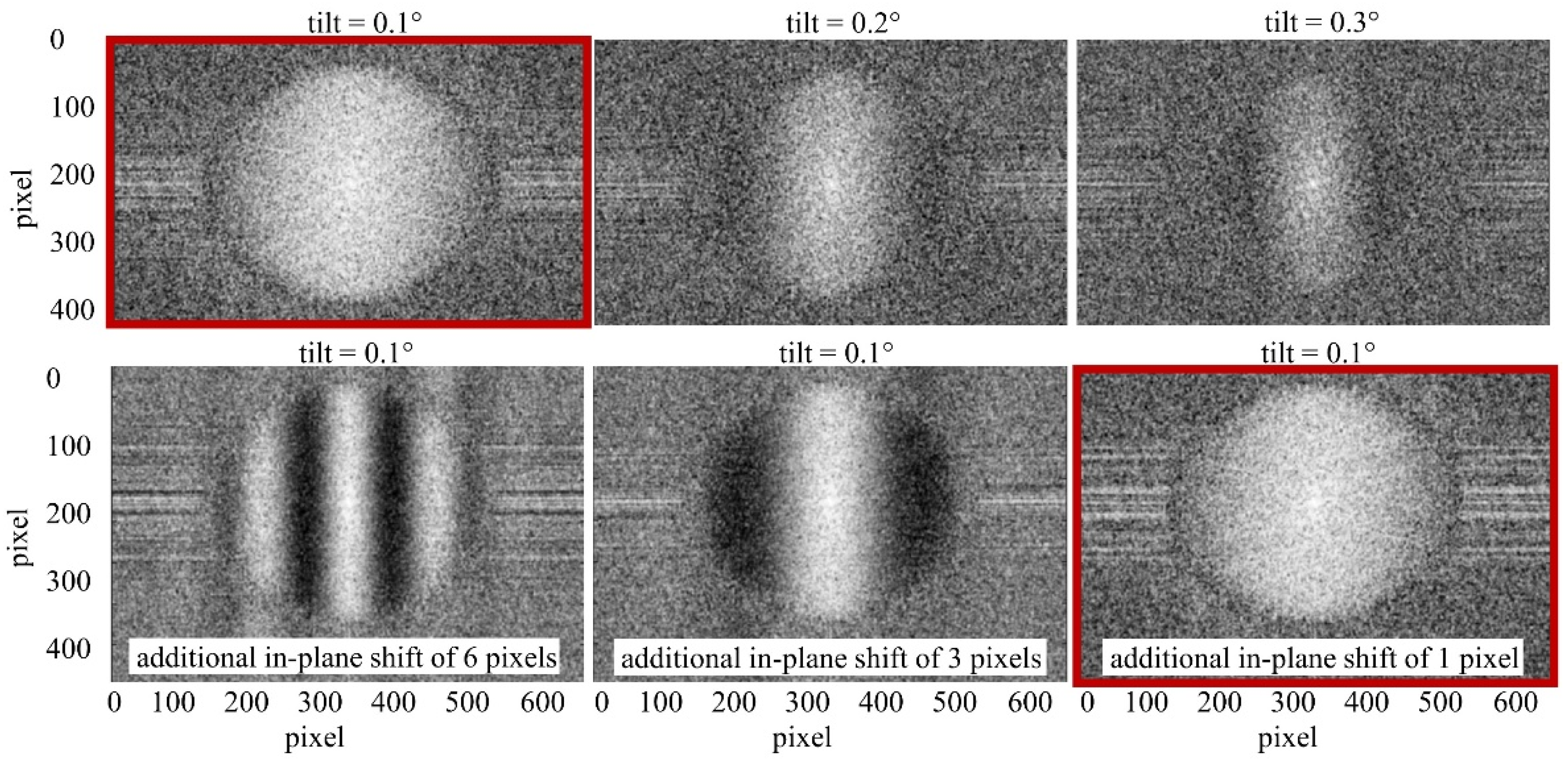

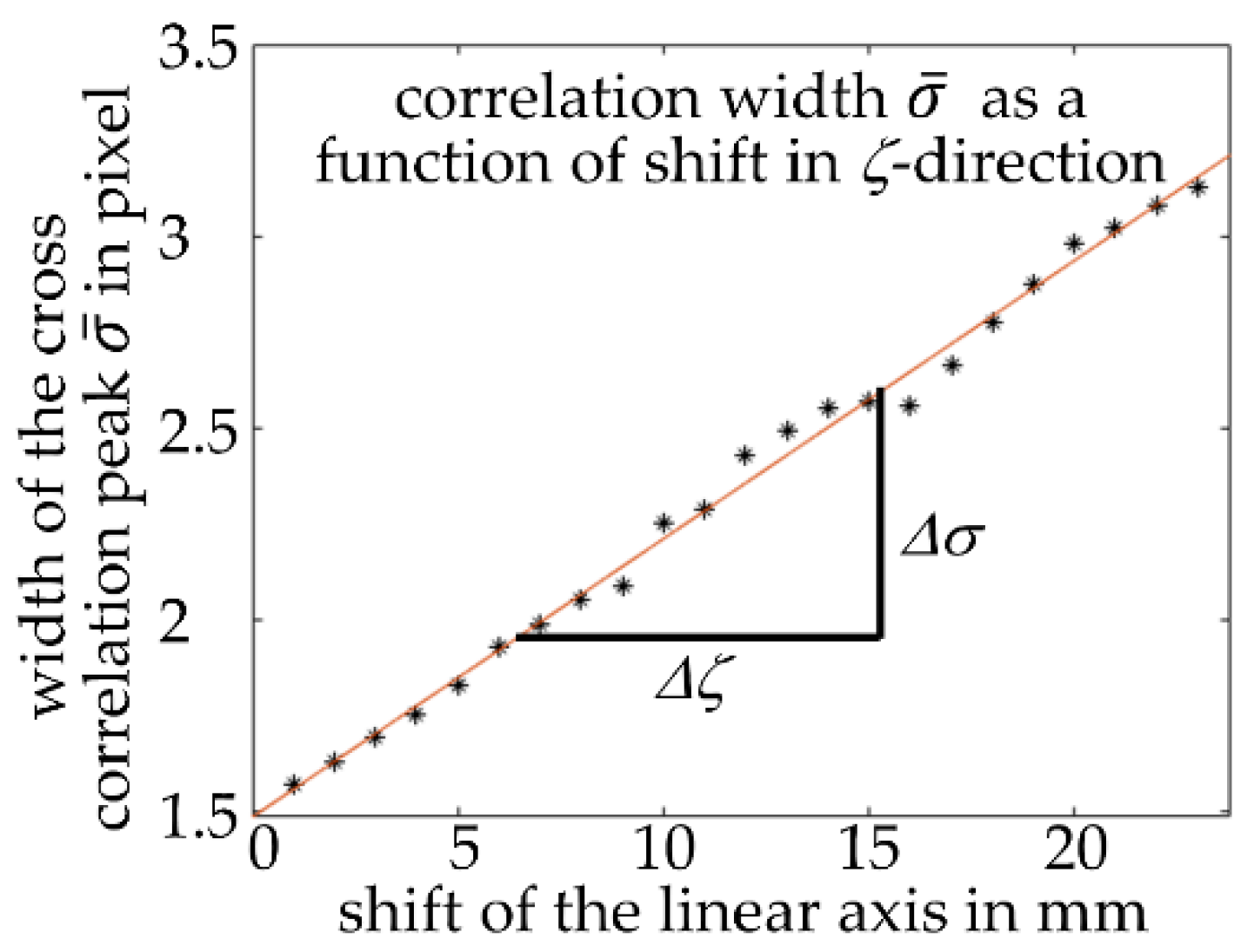
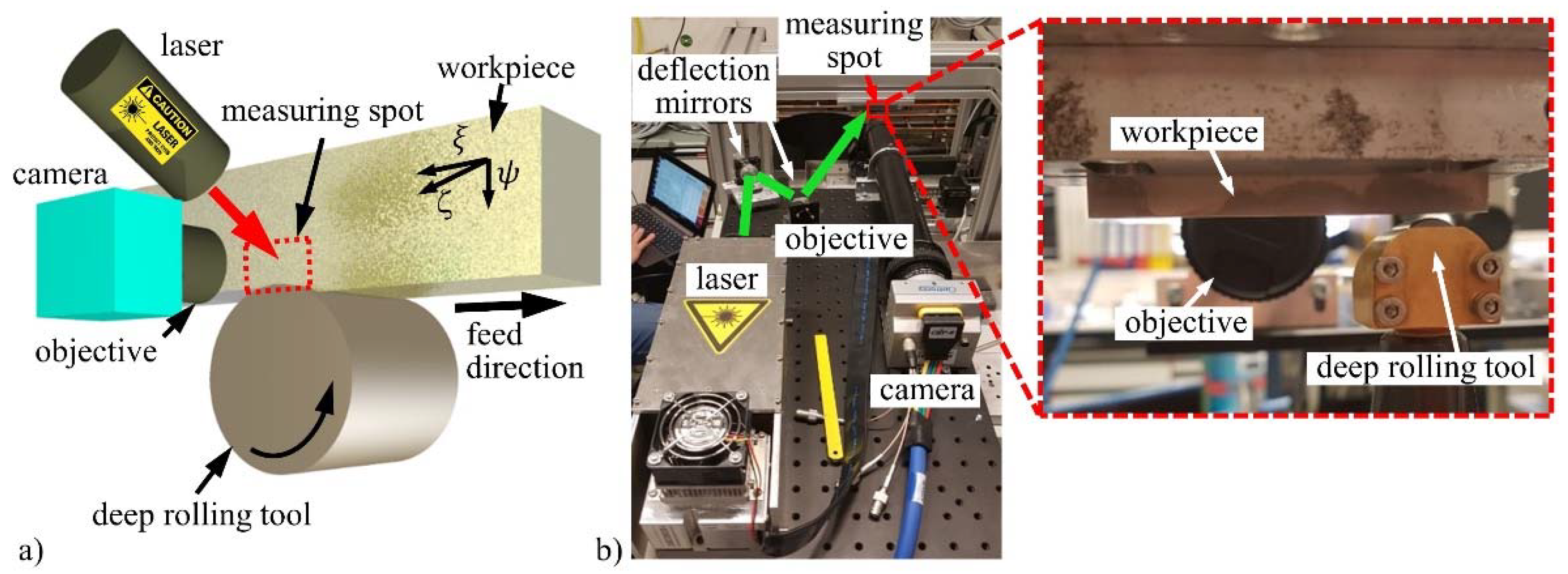
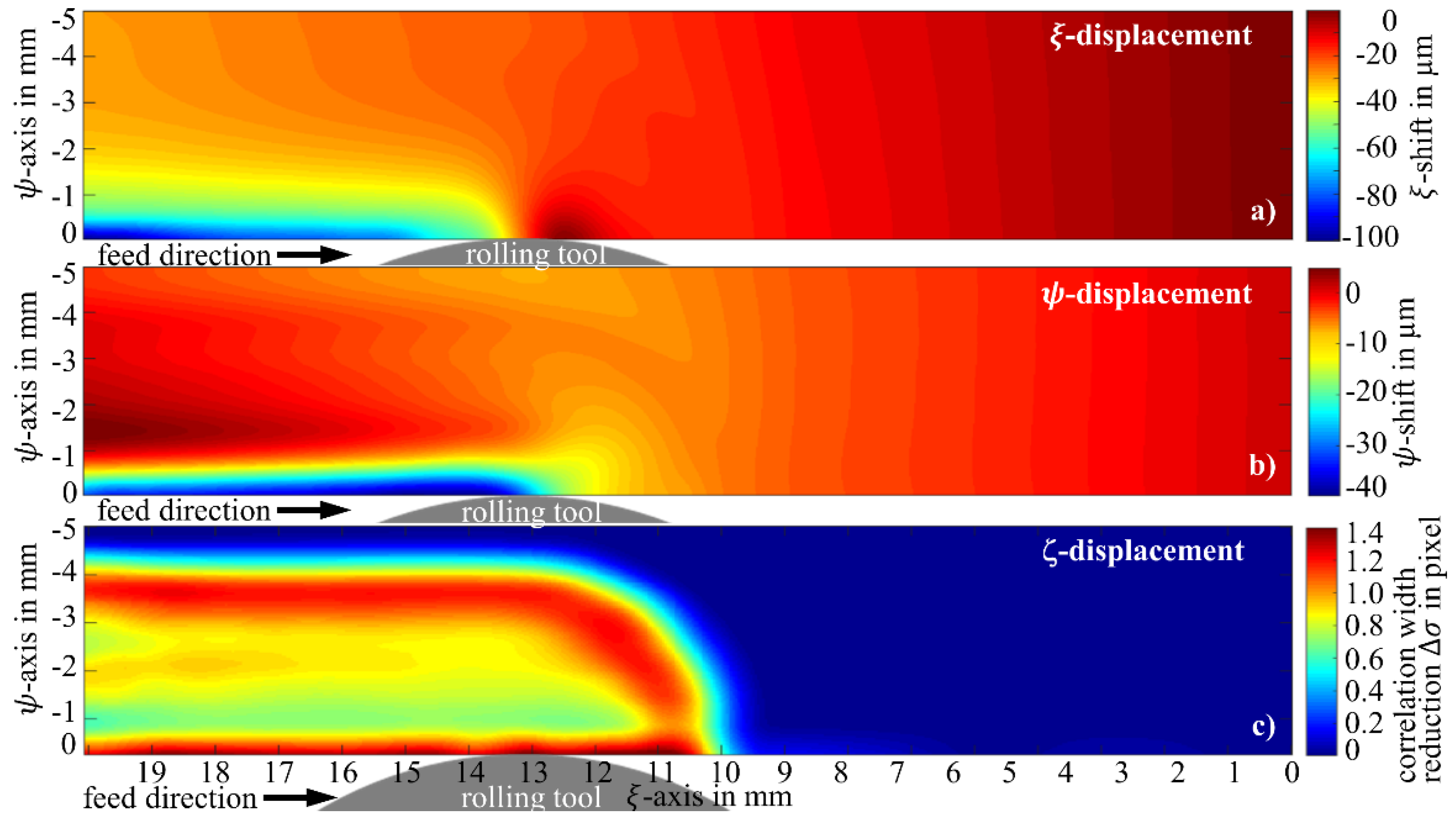
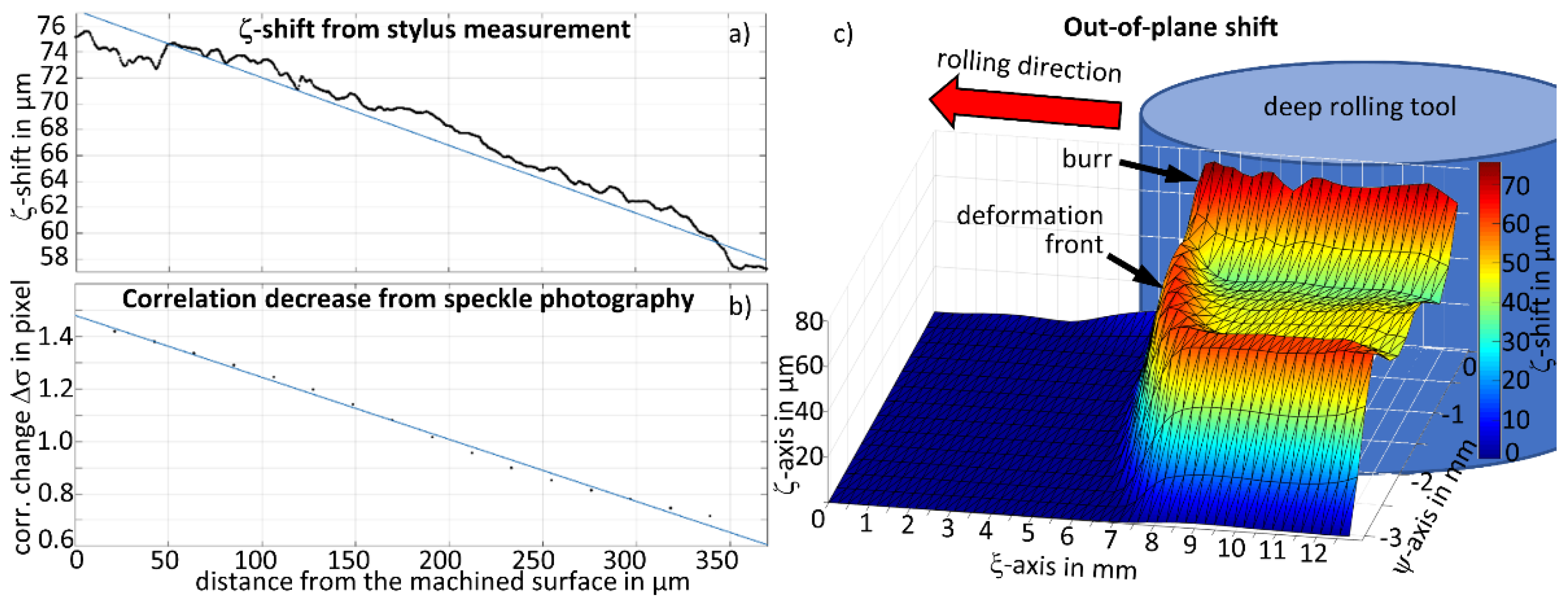
Publisher’s Note: MDPI stays neutral with regard to jurisdictional claims in published maps and institutional affiliations. |
© 2021 by the authors. Licensee MDPI, Basel, Switzerland. This article is an open access article distributed under the terms and conditions of the Creative Commons Attribution (CC BY) license (https://creativecommons.org/licenses/by/4.0/).
Share and Cite
Tausendfreund, A.; Stöbener, D.; Fischer, A. In-Process Measurement of Three-Dimensional Deformations Based on Speckle Photography. Appl. Sci. 2021, 11, 4981. https://doi.org/10.3390/app11114981
Tausendfreund A, Stöbener D, Fischer A. In-Process Measurement of Three-Dimensional Deformations Based on Speckle Photography. Applied Sciences. 2021; 11(11):4981. https://doi.org/10.3390/app11114981
Chicago/Turabian StyleTausendfreund, Andreas, Dirk Stöbener, and Andreas Fischer. 2021. "In-Process Measurement of Three-Dimensional Deformations Based on Speckle Photography" Applied Sciences 11, no. 11: 4981. https://doi.org/10.3390/app11114981





